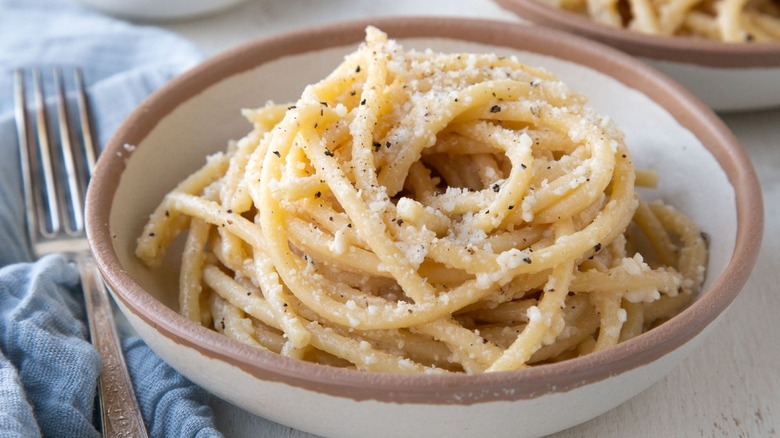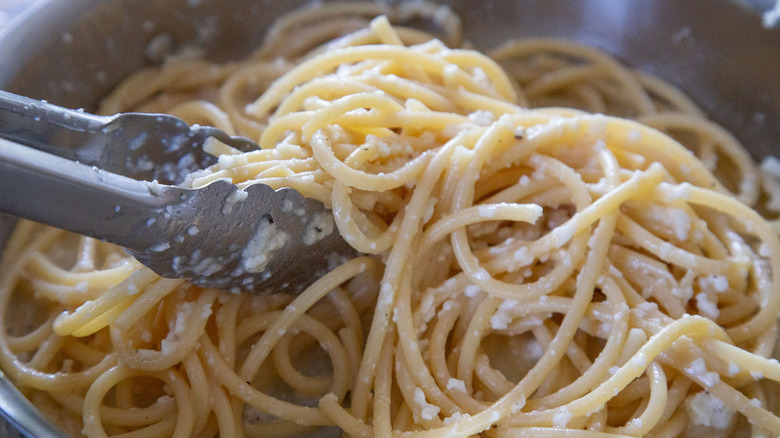The Pasta Water Tip For Top Notch Cacio E Pepe
The beauty of a classic cacio e pepe recipe lies in its simplicity. All you need are noodles, high-quality Parmigiano Reggiano or Pecorino Romano, and freshly ground black pepper (although adding a little butter and salt doesn't hurt, either). But while your ingredient list will remain blissfully short when making this dish, the technique for pulling off a perfect cacio e pepe can require a little finesse. The trick for creating a sauce out of only cheese and black pepper lies in the tactful addition of pasta water — aka the starchy liquid gold that the noodles cook in.
But it's not enough to simply dump a bunch of water into your pan with the other ingredients. Overdoing it with this liquid will turn your sauce into a watery mess, and it will dilute the only flavors you have in your dish. So, make sure to start out with just a little, stir it in, and build from there until you have the perfect texture. Plus, you want to allow the cheese and water time to properly emulsify into a consistently creamy sauce that sticks to the noodles rather than separating, which requires a little patience and legwork.
Grate your own cheese for smooth melting
One of the easiest ways to add pasta water to your cacio e pepe without overdoing it is to use tongs to transfer your cooked noodles from the pot into the skillet with your sauce. Some of the starchy liquid will naturally cling to the noodles, but the amount will be negligible enough that you won't end up with a thin sauce. However, reserve a cup of the liquid from your boiling pot just in case you need to add more later.
Then, before you pour in a little more, rigorously toss your noodles with the other ingredients until everything is smooth. Only pour in another quarter of a cup of pasta water at a time until you get a silky, creamy sauce, mixing until the cheese melts each time, but stopping just when your noodles no longer seem dry. Another way to make sure your sauce stays velvety is to grate your own cheese.
When making pasta, it's best to stay away from pre-grated cheese, which can include fillers like wood pulp that can cause clumps when incorporated into a sauce. And when doing so, try to grate your fromage as finely as possible using a fine grater such as a Microplane, which will allow your shreds to melt and emulsify more easily. Finally, make sure your pan is off the stove when you add in the cheese, as higher temperatures can also cause clumping.

